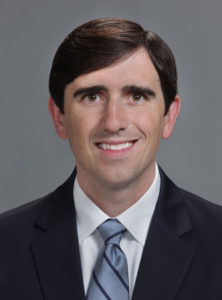Articular Cartilage Surgeon

Are you experiencing knee pain and swelling with activity? If so, you may have an articular cartilage defect. Articular cartilage defects occur when cartilage of the knee becomes damaged and can eventually lead to osteoarthritis. Cartilage surgeon, Dr. Robert Boykin provides diagnosis and both surgical and nonsurgical treatment options for patients in Asheville who have developed an articular cartilage defect. Contact Dr. Boykin’s team today!
Anatomy of the Knee
The knee joint is the area where the thigh bone (femur) meets the leg bone (tibia). The ends of each of these bones are capped by a type of cartilage called articular cartilage, which allows for smooth motion of the knee. A preserved articular cartilage layer is very important to allow normal, pain free function of the knee.
When an area of the cartilage becomes damaged, a patient will experience pain and swelling with activities. If this process continues to expand it will eventually lead to a complete loss of cartilage down to the bone (known as osteoarthritis). In this condition the knee will become progressively more stiff and painful. When a patient presents with damage to the articular cartilage, known as a chondral defect, it is of the utmost importance to treat this appropriately in an effort to restore the damaged area and preserve the surrounding cartilage. Knee specialist Dr. Robert Boykin focuses on treating articular cartilage defect injuries for patients in Asheville, Arden, Fletcher and surrounding North Carolina communities.
How to Treat Articular Cartilage Defects
The treatment for an articular cartilage defect depends on many factors including size of the defect, depth, location, associated injuries in the knee, age, and activity goals. In some cases with a small defect or in cases where osteoarthritis is affecting other areas of the knee, Dr. Boykin may elect to treat this non-operatively. In the majority of cases with a focal cartilage defect, surgery is recommended. The type of procedure to treat this depends on the location and size of the defect.
Articular Cartilage Surgery Overview
Certain defects can be treated with an arthroscopic procedure called chondroplasty. This involves using a camera and small instruments to trim away the damaged area of cartilage to alleviate the patient’s symptoms and prevent further progression of the defect. This procedure is typically undertaken in patients who do not have full thickness defects (down to bone). In patients who do have a full thickness loss of cartilage, the options include microfracture, osteochaondral autograft transfer (OATs), or osteonchondral allograft transplantation (OATs). Microfracture is a technique where a small pick is used to make holes in the bony surface of the defect. This allows the flow of marrow elements and stem cells which form a clot over the defect and eventually cover the area with a fibrocartilage layer.
The two types of OATs procedures are autograft (taken from the patient) or allograft (taken from a donor). In autograft OATs, small plugs of cartilage and bone are taken from another less important area of the patient’s knee and transferred in to fill the defect. In allograft OATs, the cartilage and bone are taken from a donor and also used to fill the defect. These procedures are done with a combination of arthroscopic and open techniques. Dr. Boykin performs each of these procedures and will discuss with the patent what the most appropriate surgery would be for their specific injury. While a cartilage defect is a serious condition, these procedures have proven results in terms of relieving pain and restoring function to the knee.
Recovery Following Articular Cartilage Surgery
Post-operative management varies depending on the specific type of procedure. For chondroplasty, patients are typically on crutches for a few days and allowed to weight-bear as tolerated with full range of motion. For the other procedures, patients are placed into a brace and weight bearing is protected for 6-8 weeks. Motion may be initially restricted and a continuous passive motion (CPM) machine is also typically used for 6 weeks after surgery. The timing for return to activities is dependent on the patient’s symptoms and the type of procedure that was required.
For additional information on chondral defects or osteoarthritis of the knee, or to schedule an appointment to discuss articular cartilage defect surgery, please contact the office of orthopedic surgeon, Dr. Robert Boykin serving patients in Asheville, Arden, Fletcher and surrounding North Carolina communities.
